ACS Nano: Rational Design of Pillar SnS/MXene Composite Structures for High Performance Lithium Storage
QQ Academic Group: 1092348845
Detailed
North Konami can provide MXene (can be customized)

Recently, the research group of Professor Han Weiqiang from Zhejiang University published a research paper titled: Rational Design of Pillared SnS/Ti3C2Tx MXene for Superior Lithium-Ion Storage in the internationally renowned academic journal ACS Nano. Layered MXene (f-MXene) nanosheet powder avoids the repacking phenomenon of f-MXene nanosheets during the preparation process and the oxidation problem during storage. By further utilizing the solvothermal reaction and annealing treatment, we successfully synthesized in situ the SnS/Ti3C2Tx composites decorated with TiO2 nanoparticles in columnar shape. In the composites, MXenes can function as a conductive network as a buffer matrix for SnS volume expansion, while the active SnS nanosheets can fully exploit their high capacity and further induce interlayer engineering of Ti3C2Tx during cycling. The columnar SnS/Ti3C2TxMXene composites showed significant improvement in electrochemical performance. And the capacity increases significantly in the subsequent cycles, which can be attributed to the “pile effect” of Ti3C2Tx MXenes. The efforts and attempts made in this work can further broaden the research and development of columnar MXene composites. The first author of this work is Dr. Zhang Shunlong from Zhejiang University.
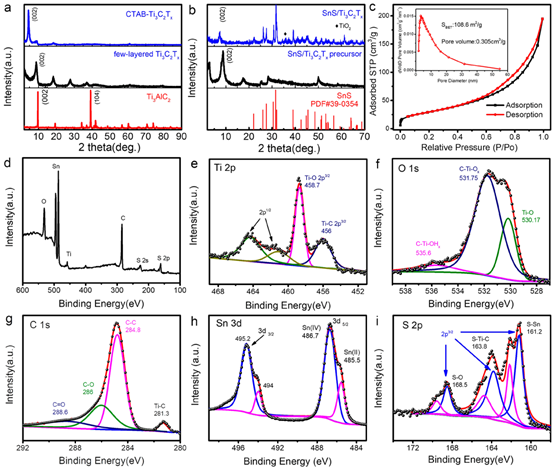
Figure 2. Physical characterization of the samples XRD patterns and XRS patterns
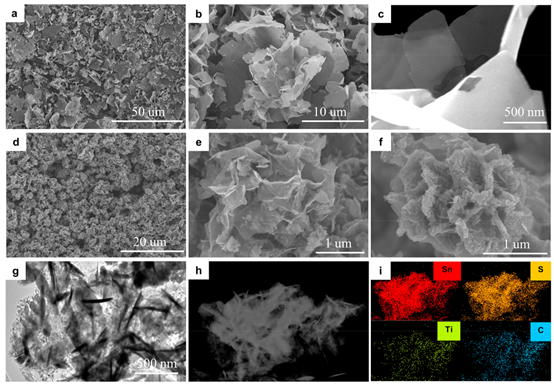
Figure 3. SEM and TEM patterns of the sample
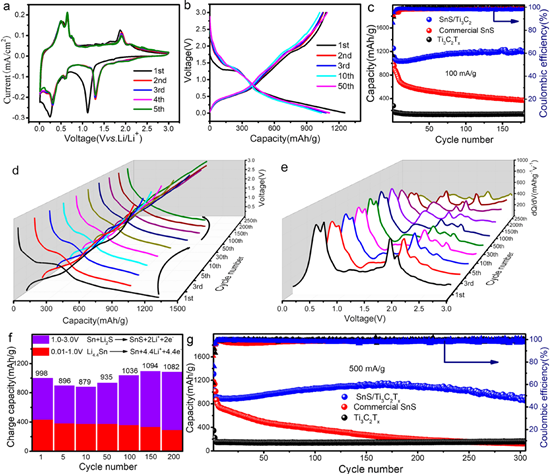
Figure 4. Electrochemical properties of SnS/Ti3C2Tx composites
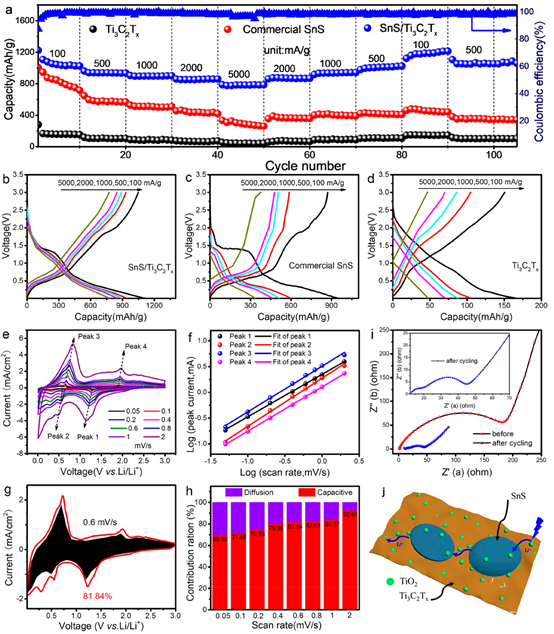
Figure 5. Comparison of electrochemical properties of three samples and kinetic analysis of SnS/Ti3C2Tx

In this paper, considering the two most distinguishable properties of MXenes, rich surface chemical composition and large interlayer spacing, the target product columnar SnS/Ti3C2Tx composite was successfully prepared by tightly immobilizing SnS nanosheets on a few-layer Ti3C2Tx electrode. CTAB is pre-column-supported, followed by a solvothermal reaction and annealing process. SnS/Ti3C2Tx composites can adequately provide high capacity, suppress the bulk problem of SnS, and exhibit excellent electrical conductivity and Ti3C2Tx tunable interlayer engineering for excellent Li-ion storage: they exhibit 1254.3 at 100 mA/g The high discharge capacity of mAh/g remains at 866 mAh/g after 300 cycles at 500 mA/g. Even at a higher current density of 5000 mA/g, the specific capacity can reach 787.7 mAh/g, which demonstrates the excellent rate capability of the composite. Due to the "columnar effect" between metal sulfides and MXenes, a capacity increase can be observed in subsequent cycles, which successfully broadens the field of columnar MXene composites, from multilayer MXenes to f-MXenes, from metal oxides to metal sulfides. It is believed that the column support strategy of MXenes will have wider applications in the future, resulting in a series of outstanding studies.
Literature link:
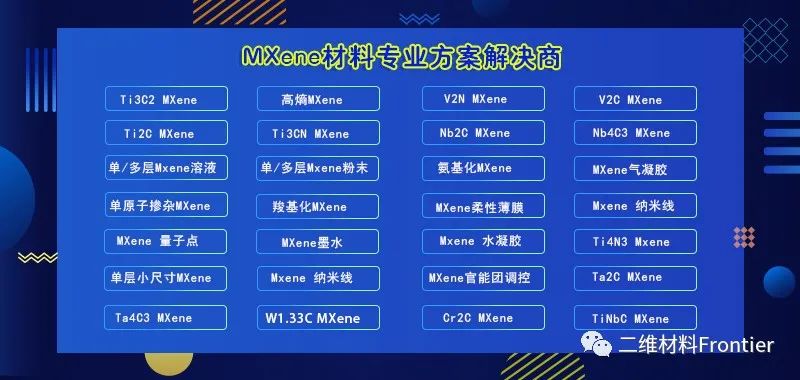
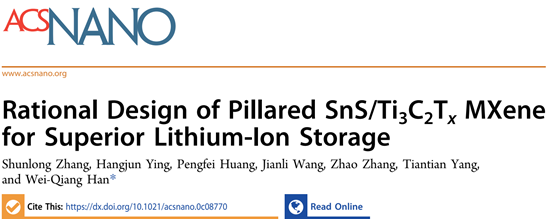


Recently, the research group of Professor Han Weiqiang from Zhejiang University published a research paper titled: Rational Design of Pillared SnS/Ti3C2Tx MXene for Superior Lithium-Ion Storage in the internationally renowned academic journal ACS Nano. Layered MXene (f-MXene) nanosheet powder avoids the repacking phenomenon of f-MXene nanosheets during the preparation process and the oxidation problem during storage. By further utilizing the solvothermal reaction and annealing treatment, we successfully synthesized in situ the SnS/Ti3C2Tx composites decorated with TiO2 nanoparticles in columnar shape. In the composites, MXenes can function as a conductive network as a buffer matrix for SnS volume expansion, while the active SnS nanosheets can fully exploit their high capacity and further induce interlayer engineering of Ti3C2Tx during cycling. The columnar SnS/Ti3C2TxMXene composites showed significant improvement in electrochemical performance. And the capacity increases significantly in the subsequent cycles, which can be attributed to the “pile effect” of Ti3C2Tx MXenes. The efforts and attempts made in this work can further broaden the research and development of columnar MXene composites. The first author of this work is Dr. Zhang Shunlong from Zhejiang University.

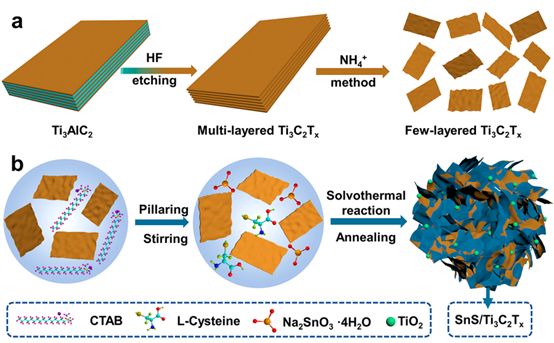

Figure 2. Physical characterization of the samples XRD patterns and XRS patterns

Figure 3. SEM and TEM patterns of the sample

Figure 4. Electrochemical properties of SnS/Ti3C2Tx composites

Figure 5. Comparison of electrochemical properties of three samples and kinetic analysis of SnS/Ti3C2Tx

In this paper, considering the two most distinguishable properties of MXenes, rich surface chemical composition and large interlayer spacing, the target product columnar SnS/Ti3C2Tx composite was successfully prepared by tightly immobilizing SnS nanosheets on a few-layer Ti3C2Tx electrode. CTAB is pre-column-supported, followed by a solvothermal reaction and annealing process. SnS/Ti3C2Tx composites can adequately provide high capacity, suppress the bulk problem of SnS, and exhibit excellent electrical conductivity and Ti3C2Tx tunable interlayer engineering for excellent Li-ion storage: they exhibit 1254.3 at 100 mA/g The high discharge capacity of mAh/g remains at 866 mAh/g after 300 cycles at 500 mA/g. Even at a higher current density of 5000 mA/g, the specific capacity can reach 787.7 mAh/g, which demonstrates the excellent rate capability of the composite. Due to the "columnar effect" between metal sulfides and MXenes, a capacity increase can be observed in subsequent cycles, which successfully broadens the field of columnar MXene composites, from multilayer MXenes to f-MXenes, from metal oxides to metal sulfides. It is believed that the column support strategy of MXenes will have wider applications in the future, resulting in a series of outstanding studies.
Literature link:
https://doi.org/10.1021/acsnano.0c08770


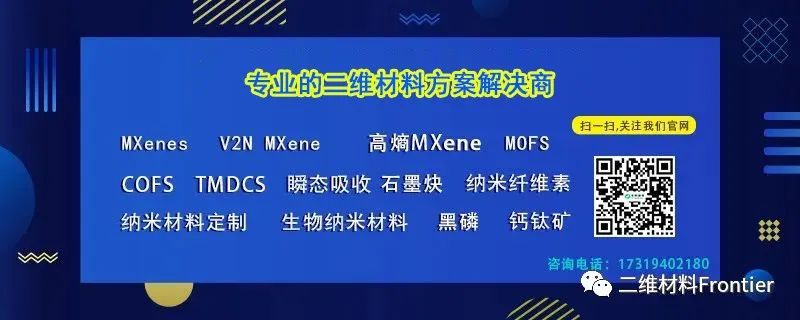
- Previous:
- Next: MXene breakthrough: Na


 mxene academic
mxene academic